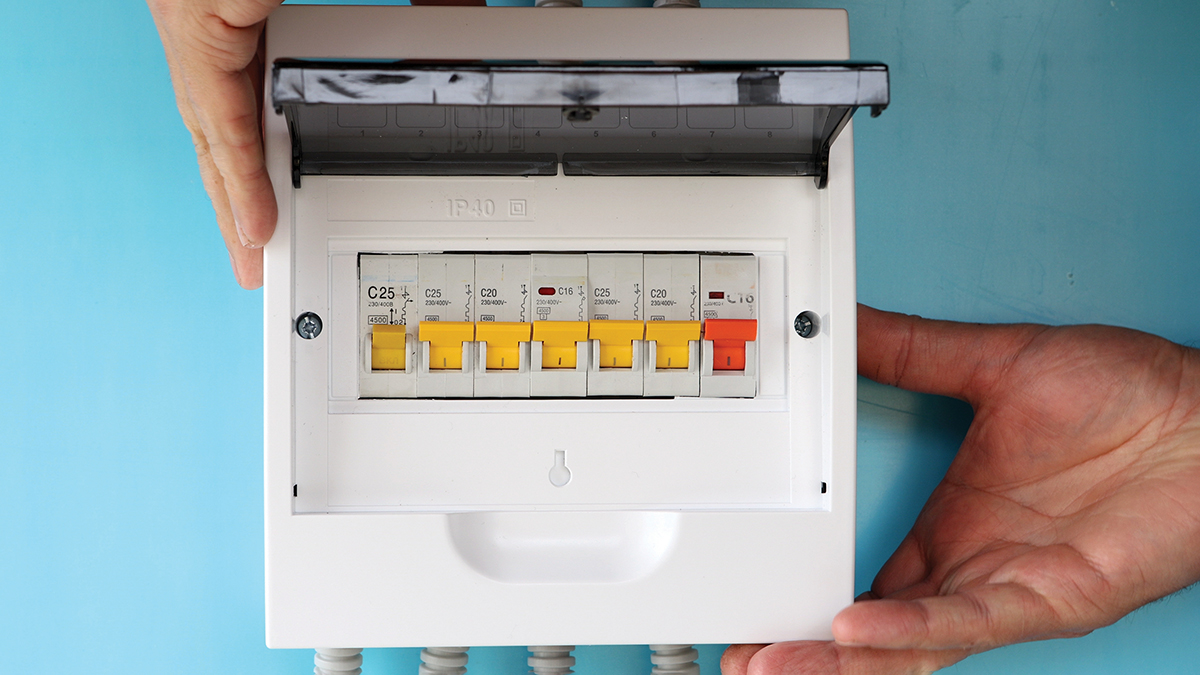To play this game, you need a sharp eye, a quick mind and a 2014 National Electrical Code book.
(Fill-in-the-blank questions are looking for the exact word(s) used in the NEC.)
The Questions
1. Metal raceways, cable trays, cable armor, cable sheath, enclosures, frames, fittings, and other metal non–current-carrying parts that are to serve as __________, with or without the use of supplementary equipment grounding conductors, shall be bonded where necessary to ensure electrical continuity and the capacity to conduct safely any fault current likely to be imposed on them.
- Grounded conductors
- Ungrounded conductors
- Grounding electrode conductors
- Equipment grounding conductors
2. In __________ branch circuits, the continuity of a grounded conductor shall not depend on device connections such as lampholders, receptacles, and so forth, where the removal of such devices would interrupt the continuity.
- Isolated
- Multiwire
- Dedicated
- Individual
3. Conductor overload protection shall not be required where the interruption of the circuit would create a __________, such as in a material-handling magnet circuit or fire pump circuit. Short-circuit protection shall be provided.
- Fault
- Failure
- Hazard
- Short circuit
4. Where the number of current-carrying conductors in a raceway or cable exceeds three, or where single conductors or multiconductor cables are installed without maintaining spacing for a continuous length longer than __________ and are not installed in raceways, the allowable ampacity of each conductor shall be reduced as shown in Table 310.15(B)(3)(a).
- 450 mm (18 in.)
- 600 mm (24 in.)
- 900 mm (36 in.)
- 3.0 m (10 ft)
5. Each motor used in a continuous duty application and rated more than __________ shall be protected against overload by one of the means in 430.32(A)(1) through (A)(4).
- 1 hp
- 2 hp
- 10 hp
- 1500 hp
6. __________ shall be constructed and installed so that electrical and mechanical continuity of the complete system are assured.
- Wireways
- Auxiliary gutters
- Multioutlet assemblies
- Surface metal raceways
7. The continuity of a __________ conductor shall not depend on a connection to a metallic enclosure, raceway, or cable armor.
- Bonding
- Grounded
- Grounding
- Ungrounded
8. Cable trays are allowed to have mechanically discontinuous segments between cable tray runs.
- True
- False
9. It is not permitted to remove any coatings at contact points or surfaces when making bonding connections.
- True
- False
10. Where continued motor operation is necessary for safe shutdown of equipment or process, a motor overload sensing device is allowed to be connected to a supervised alarm instead of causing immediate interruption of the motor circuit.
- True
- False
Bonus question:
[WpProQuiz 4]
The Answers
1. D, equipment grounding conductors.
Section 250.96(A) requires that any metal normally non–current-carrying components of the electrical system that are to serve as equipment grounding conductors must be bonded where necessary to ensure electrical continuity and maintain an effective ground-fault current path.
2. B, multiwire.
This requirement is found in Section 300.13(B).
3. C, hazard.
In general, overcurrent protection must be provided for conductors in accordance with their ampacity. However, 240.4(A) does not require overload protection for circuits where a greater hazard would occur in the event of a loss of power. Two examples given are fire pump circuits and material-handling magnet circuits, instances in which continuity of power is necessary to prevent an increased hazard to people.
4. B, 600 mm (24 in.).
When cables are placed in continuous contact for more than 24 inches, the conductor ampacity must be adjusted to account for the decreased heat dissipation and increased ambient temperature caused by the close proximity of multiple cables. Since the NEC Style Manual requires that tables be designated by the number of the NEC rule in which they appear, the table reference in the question was a pointer to the rule in which the answer is found, 310.15(B)(3)(a).
5. A, 1 hp.
Section 430.32 contains rules for continuous-duty motors, and 430.32(A) gives direction for motors rated more than 1 hp. The majority of motors are rated for continuous duty and are marked with the letters “CONT” to indicate continuous. If the duty rating is not marked, it can be assumed that the motor is rated for continuous duty. The references at the end of the requirement again provided a clue for finding the answer for this question.
6. A, wireways.
Section 376.100(A) contains this requirement. If you guessed auxiliary gutters on this one, don’t feel badly; that article has a similar requirement, but only the requirement for metal wireways has the exact wording in the question.
7. B, grounded.
200.2(B) contains the general requirement for continuity of the grounded conductor, while 300.13(B) specifically addresses the continuity of multiwire branch circuits.
8. A, true.
392.18(A) requires that cable trays be installed as a complete system, and that field bends or modifications shall be made in such a way to ensure the electrical continuity of the cable tray system. However, mechanically discontinuous segments are allowed between cable tray runs or between cable tray runs and equipment.
9. B, false.
250.96(A) states that “Any nonconductive paint, enamel, or similar coating shall be removed at threads, contact points, and contact surfaces or be connected by means of fittings designed so as to make such removal unnecessary.”
10. A, true.
430.44 contains provisions for the orderly shutdown of motor loads that would create an additional or increased hazard to people. Where continued motor operation is necessary for safe shutdown of the equipment or process, a motor overload sensing device is permitted to allow time for corrective action or an orderly shutdown.














Find Us on Socials